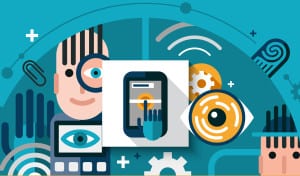 Advances in sensor technology are making it both more prominent and impactful in consumer electronics, according to a new report from Frost & Sullivan. The growth consultancy’s report considers a range of sensor technologies including touch, motion, gesture, pressure, biometric, and even brain sensors.
Advances in sensor technology are making it both more prominent and impactful in consumer electronics, according to a new report from Frost & Sullivan. The growth consultancy’s report considers a range of sensor technologies including touch, motion, gesture, pressure, biometric, and even brain sensors.
Basically, the report argues that there are a lot of different sensors for a lot of different devices. Touch sensors have long been prominent in smartphones, for example, but now biometric sensors such as fingerprint scanners are also becoming widespread, and are appearing on a growing number of other devices too. And as sensor technology continues to advance, ever more useful applications will be discovered.
In a report synopsis, Technical Insights Principal Analyst Peter Adrian notes that “3D sensor technologies used for gesture recognition can deliver intuitive, natural human-device interaction,” while “conductive films, such as silver nanowire films, will quicken the development of flexible, smaller, lighter, intuitive, economical and lower-power touch screens.”
The report emphasizes the need of device makers to focus on “flexibility, robustness, ultra-low power consumption, tiny form factor, and operating capability in different environments and lighting conditions,” and notes that sensor technologies will converge in areas such as haptics, wearable devices, and devices associated with the Internet of Things. Indeed, for that last area in particular, low-energy, efficient sensors will be crucial as various everyday devices connect online; and biometric sensors may become particularly important in ensuring that user data transmitted from these devices remains secure.
—
August 7, 2015 – by Alex Perala


Follow Us